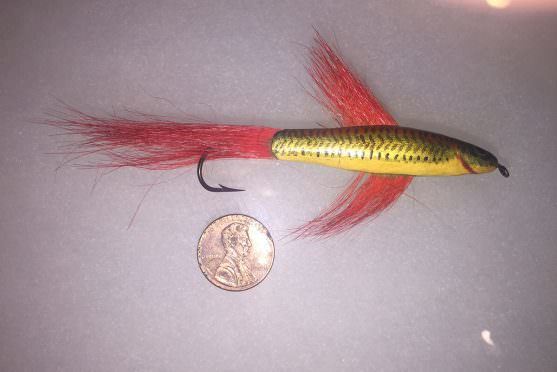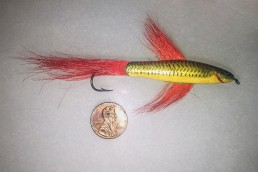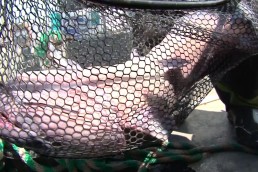Too Pretty to Fish With
SHARE THIS POST
There have been thousands of lures made over the centuries. Some crude, others well made with plain but functional tools. However, some are so beautiful we consider them works of art. There are also lures produced by people with no formal schooling in art techniques that have a solid following. These folk artists produce folk art lures that vary widely from primitive to items that easily qualify as fine art.

We have written about Bud Stewart and his very popular line up, from muskie baits to small fly rod lures. The Smithsonian has even named Stewart one of this country’s great folk artists. There are also others baits of made of horn, wood, metal, wool, plastic, feathers and anything the makers’ imagination could conceive there and elsewhere.
Recently, we attended an educational session by art professor Chance Dunlap at the National Fishing Lure Collectors Club’s national meeting on these types of lures. The interest was already strong and the meeting showed that these collectors are growing.
Some contemporary makers have taken this art form to levels never seen before. Their use of precious metals, semi- and precious jewels and fine craftsmanship are beautiful.
One lure recently found in an old box of flies inspired our research for its name and maker. And in a short time, friends filled in the missing data.
Are you enjoying this post?
You can be among the first to get the latest info on where to go, what to use and how to use it!
A Kellman Minnow, whose maker was Charles C. Kellman of Detroit, made lures in the 1930s and ‘40s. In 1930, he had quite a display at the Detroit Boating and Fishing Show.
Our files contain crude though readable copies of several newspaper articles on him. He produced, demonstrated and sold over 100 lure models, all handmade. Many were made to order, including spearing decoys measuring up to 30 inches. Some were built with feathers that moved in currents, and not just those that swam in a circle like most other decoys.
He would make lures to order of any species of insect and most were built with a single hook. He believed that treble hooks harmed the fish. Kellman said his lures would even catch fish in fished out lakes.
His small workbench was equipped with a vise, tweezers and other miniature tools. His creations still give pleasure to those who see them.
Dan Basore is a fishing historian and steward of the history of the sport. In his efforts to preserve fishing history, Basore is always on the lookout for information about early lure makers, old lures, pre- level wind reels, manufacturer catalogs, tournament casting items and the like. If you possess information or materials that can help, please contact Dan Basore, Historical Fishing Display, at 630-393-3474 or 1-800-347-4525.
MWO
SHARE THIS POST
Did you enjoy this post?
You can be among the first to get the latest info on where to go, what to use and how to use it!
Dan Basore
Dan Basore is a fishing historian and steward of the history of the sport. In his efforts to preserve fishing history, he is always on the lookout for information about early lure makers, old lures, pre-level wind reels, manufacturer catalogs, tournament casting items and the like. If you possess information or materials of this kind, please contact him at 630-393-3474 or by email at ollures@aol.com.



